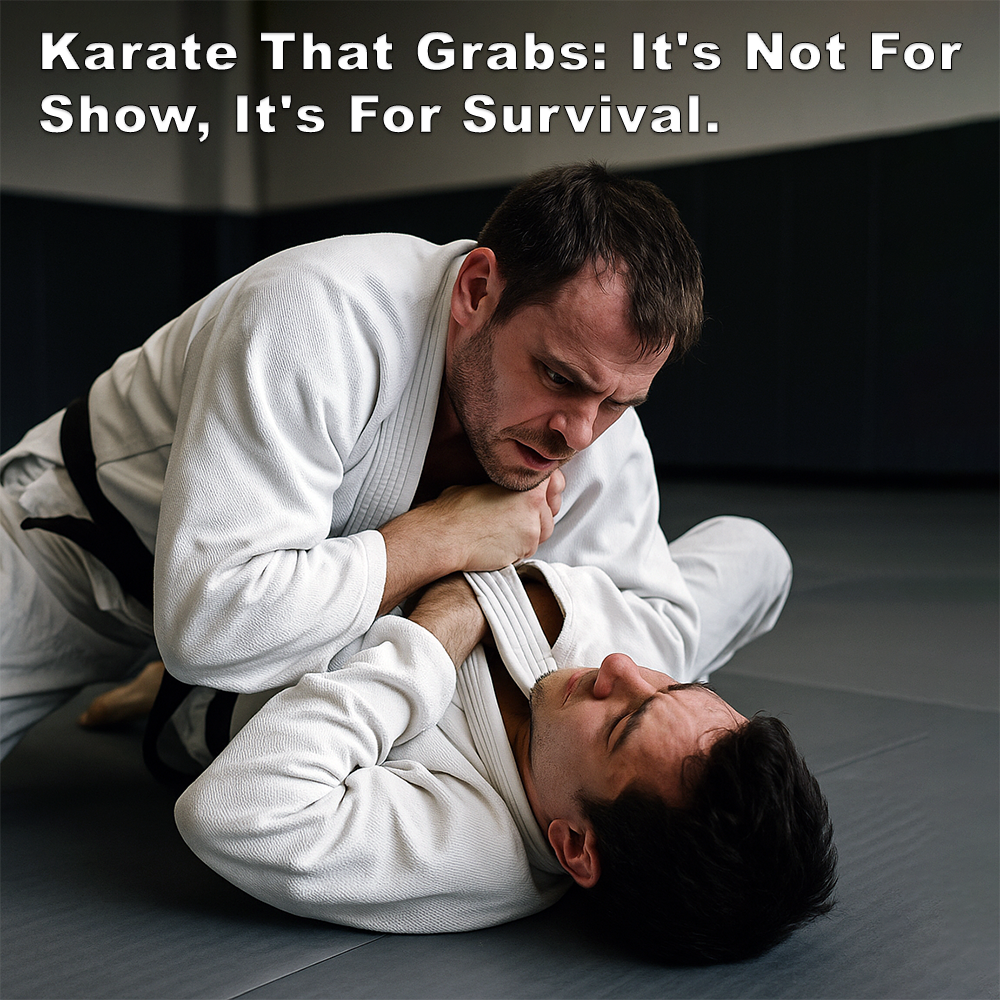
(Approx 2 minute 50 second read)
In a recent article, I explored how some people view karate as a performance art. They often believe that the perfect execution of a kata is the ultimate goal – the pursuit of a flawless performance.
.
But why do they think this? And does it actually make sense?
.
What is the true goal of karate?
.
Many people today say it’s about building character, competition, fun, exercise. That’s the popular narrative, particularly in the context of karate-do, a philosophy that began to take shape in the early 1900s. But let’s take a step back – traditional karate only dates back to this point, so does that really define its original purpose?
.
No of course not.
.
From the classical perspective, the aim was always clear – to become effective in self-protection. Simply, this came through two-person drills, with kata later evolving as a way to preserve and practice those principles alone.
.
In modern karate, particularly in the tournament-based or performance-driven schools, the focus often shifts to perfecting kata – rather than its underlying purpose.
.
When the focus becomes more about the aesthetic, the core principles that make karate effective in real situations gets lost.
.
Self-preservation – the ability to protect yourself in a crisis – is no longer the central goal. Instead, we see an emphasis on perfecting techniques for display, completely divorced from their original context. This is why, when real-life situations arise, many practitioners are unprepared, despite their years of practice in the dojo (new article coming soon).
.
In classical systems, the emphasis was always on practical application – understanding that training was meant to serve a function. The ability to defend yourself. This was the true measures of skill, not the ability to perform a flawless kata or to win a trophy.
.
So many people tell me they have no interest in self-defense, if that’s for you, then fine. But it’s important to remember, the original purpose of karate and kata was always self-preservation.
.
In my opinion, this should be the process to proficiency in kata: five key steps:
.
1: Memorize the pattern and techniques – Learn the movements.
.
2: Perform the kata correctly – With power, flow, and good form.
.
3: Understand the theme and strategy of the kata – Grasp its deeper meaning.
.
4: Demonstrate realistic applications – Show how each movement applies in real-world scenarios, consistent with the kata’s theme.
.
5: Apply kata principles spontaneously – In drills and combat situations.
.
Unfortunately most students stop at step one. Some progress to step two. Very few make it to step three. And even fewer reach steps four and five.
.
It’s a shame that all this depth is missing today. People often tell me they practice for exercise and fun – while that might be your ‘thing’ – there’s so much missing from your training.
.
I get it. If you’re happy with that, great. But for me it’s like buying a musical instrument just to hang it on the wall. It may look good – but wouldn’t it be better if you actually learned to play it?
.
If we strip it down to just the aesthetics or the philosophical, we’re losing sight of the full picture. Karate isn’t just a fitness regimen or a character-building exercise – it was designed to prepare someone for real-world threats. If that’s not your focus, that’s fine, but let’s not forget why it all started.
.
But for those who still care to look deeper, the path is still there. Buried in plain sight.
.
Karate wasn’t designed to be just a breathing exercise or improve your character. It became that when it moved to having to appeal to the masses.
.
And if you’ve spent years meditating under a tree, and have no interest in self-defense – fine. But let’s not kid ourselves.
.
That’s not what karate was created for.
.
.
Written by Adam Carter
